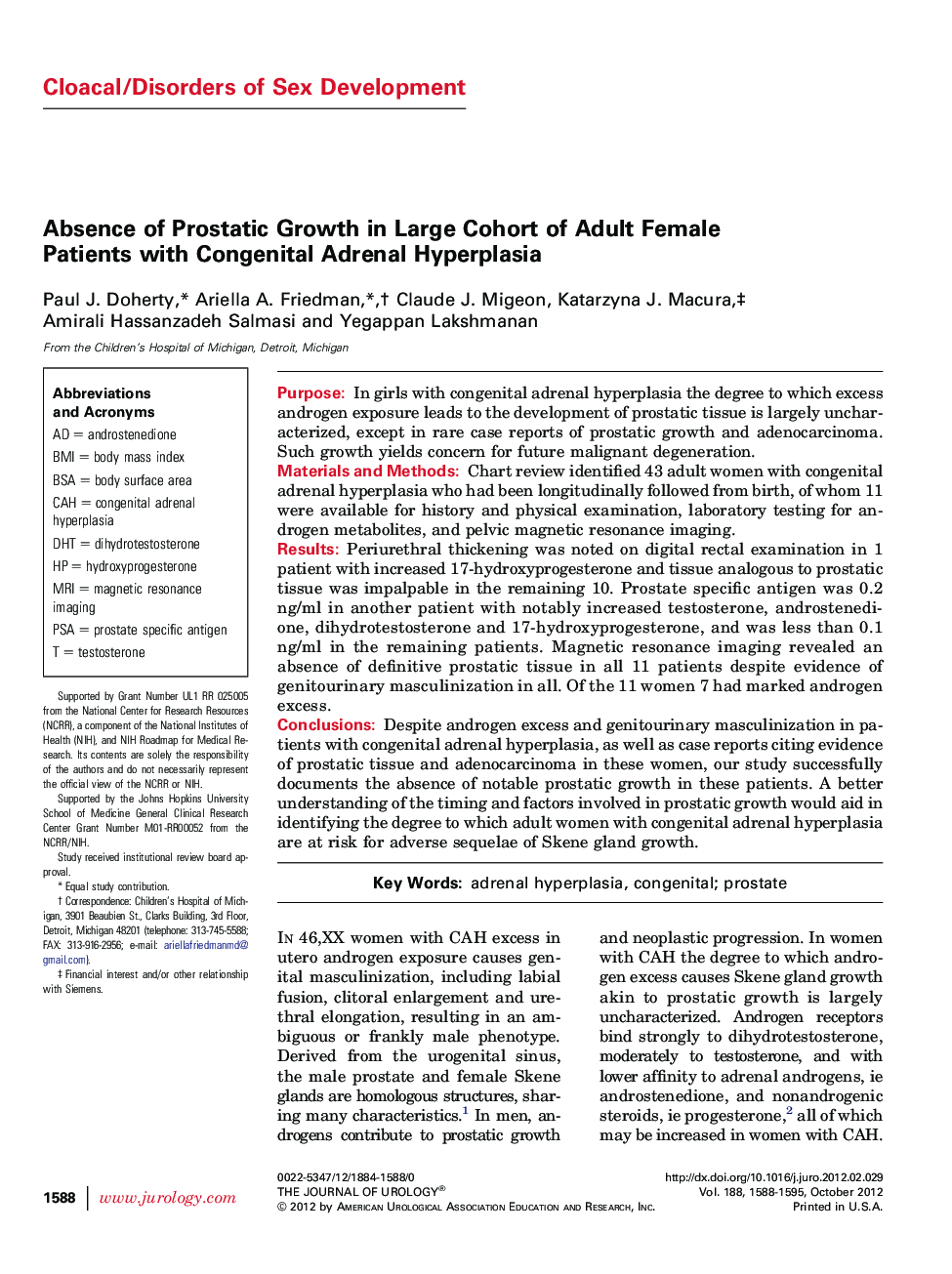| Article ID | Journal | Published Year | Pages | File Type |
|---|---|---|---|---|
| 3867517 | The Journal of Urology | 2012 | 8 Pages |
PurposeIn girls with congenital adrenal hyperplasia the degree to which excess androgen exposure leads to the development of prostatic tissue is largely uncharacterized, except in rare case reports of prostatic growth and adenocarcinoma. Such growth yields concern for future malignant degeneration.Materials and MethodsChart review identified 43 adult women with congenital adrenal hyperplasia who had been longitudinally followed from birth, of whom 11 were available for history and physical examination, laboratory testing for androgen metabolites, and pelvic magnetic resonance imaging.ResultsPeriurethral thickening was noted on digital rectal examination in 1 patient with increased 17-hydroxyprogesterone and tissue analogous to prostatic tissue was impalpable in the remaining 10. Prostate specific antigen was 0.2 ng/ml in another patient with notably increased testosterone, androstenedione, dihydrotestosterone and 17-hydroxyprogesterone, and was less than 0.1 ng/ml in the remaining patients. Magnetic resonance imaging revealed an absence of definitive prostatic tissue in all 11 patients despite evidence of genitourinary masculinization in all. Of the 11 women 7 had marked androgen excess.ConclusionsDespite androgen excess and genitourinary masculinization in patients with congenital adrenal hyperplasia, as well as case reports citing evidence of prostatic tissue and adenocarcinoma in these women, our study successfully documents the absence of notable prostatic growth in these patients. A better understanding of the timing and factors involved in prostatic growth would aid in identifying the degree to which adult women with congenital adrenal hyperplasia are at risk for adverse sequelae of Skene gland growth.
